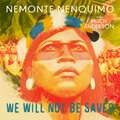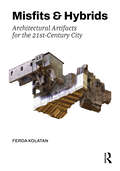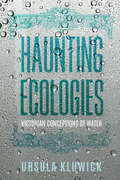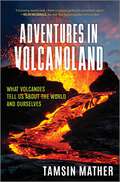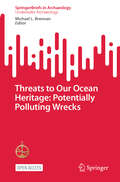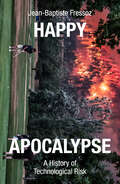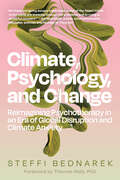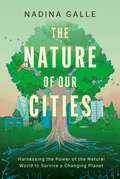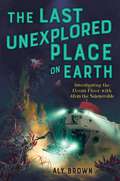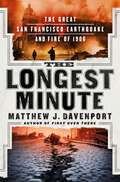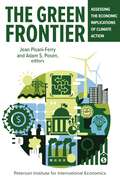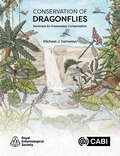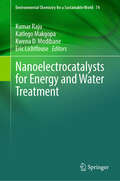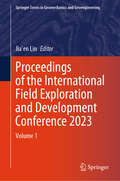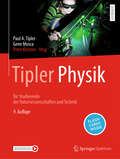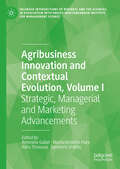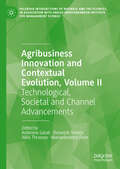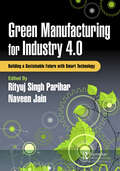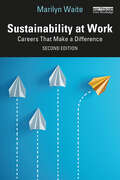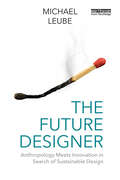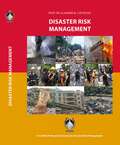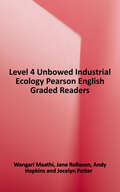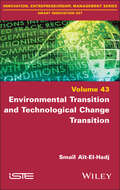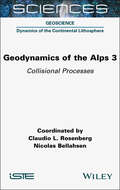- Table View
- List View
We Will Not Be Saved: A memoir of hope and resistance in the Amazon rainforest
by Nemonte Nenquimo** Publishing in the US as WE WILL BE JAGUARS**'I'm here to tell you my story, which is also the story of my people and the story of this forest.'Born into the Waorani tribe of Ecuador's Amazon rainforest, Nemonte Nenquimo was taught about plant medicines, foraging, oral storytelling, and shamanism by her elders. Age 14, she left the forest for the first time to study with an evangelical missionary group in the city. Eventually, her ancestors began appearing in her dreams, pleading with her to return and embrace her own culture.She listened. Two decades later, Nemonte has emerged as one of the most forceful voices in climate-change activism. She has spearheaded the alliance of indigenous nations across the Upper Amazon and led her people to a landmark victory against Big Oil, protecting over a half million acres of primary rainforest. Her message is as sharp as the spears that her ancestors wielded - honed by her experiences battling loggers, miners, oil companies and missionaries.In this astonishing memoir, she partners with her husband Mitch Anderson, founder of Amazon Frontlines, digging into generations of oral history, uprooting centuries of conquest, hacking away at racist notions of Indigenous peoples, and ultimately revealing a life story as rich, harsh and vital as the Amazon rainforest herself.The Waorani language (referred to as Wao Tededo in the audiobook) is one of the world's most endangered languages and is only spoken by around 2,000 people. The Publishers would like to thank Oswando Nenquimo (Opi) and Connie Dickinson as well as the Endangered Languages Archive https://www.elararchive.org/ and the Endangered Languages Documentation Program https://www.eldp.net/ for their valuable support in ensuring accurate pronunciation of Waorani names and terms.
Misfits & Hybrids: Architectural Artifacts for the 21st-Century City
by Ferda KolatanContemporary cities are shaped by the unlikely adjacencies of objects that are vastly different in kind, origin, and scale: buildings, infrastructure, and other urban components that over time accumulate into mismatched configurations. However, despite the ubiquity of these oddities and their impact on the city, we rarely give them much consideration. In Misfits & Hybrids, Ferda Kolatan explores the untapped potential in these unexpected conditions for a new kind of architecture. A diverse array of projects, developed in Kolatan’s design studios at the University of Pennsylvania Weitzman School of Design, illustrates how hybrid artifacts can reveal the often overlooked cultural, socio-political, and material histories of a site, fostering design tactics invested in reinventing the existing. Set within the cosmopolitan megacities of Istanbul, Cairo, and New York, the projects are conceived as real fictions, conjuring novel narrative, aesthetic, and representational forms to reflect the pluralistic postindustrial city.
Haunting Ecologies: Victorian Conceptions of Water (Victorian Literature and Culture Series)
by Ursula KluwickVictorians&’ views of water and its role in how the social fabric of Victorian Britain was imagined Water matters like few other substances in people&’s daily lives. In the nineteenth century, it left its traces on politics, urban reform, and societal divisions, as well as on conceptualizations of gender roles. Drawing on the methodology of material ecocriticism, Ursula Kluwick&’s Haunting Ecologies argues that Victorian Britons were keenly aware of aquatic agency, recognizing water as an active force with the ability to infiltrate bodies and spaces. Kluwick reads works by canonical writers such as Braddon, Dickens, Stoker, and George Eliot alongside sanitary reform discourse, court cases, journalistic articles, satirical cartoons, technical drawings, paintings, and maps. This wide-ranging study sheds new light on Victorian-era anxieties about water contamination as well as on how certain wet landscapes such as sewers, rivers, and marshes became associated with moral corruption and crime. Applying ideas from the field of blue humanities to nineteenth-century texts, Haunting Ecologies argues for the relevance of realism as an Anthropocene form.
Adventures in Volcanoland: What Volcanoes Tell Us About the World and Ourselves
by Tamsin MatherA mix of memoir, travel and popular science, charting journeys across deserts, through jungles and up ice caps, to some of the most important volcanoes around the world In this captivating book from one of the most influential geochemists in the field, Tamsin Mather takes us along on her globe-spanning excursions from Nicaragua to Hawaii, Santorini to Ethiopia and beyond. With warmth and lyricism, she explores the cultural roles volcanoes play throughout history, and the growing and evolving science behind their formation and eruptions.Adventures in Volcanoland is an urgent and poetic exploration into the world's most mysterious geological mountains and how they make and shape our world.
Threats to Our Ocean Heritage: Potentially Polluting Wrecks (SpringerBriefs in Archaeology)
by Michael L. BrennanThis open access volume focuses on the environmental hazards and cultural significance of Potentially Polluting Wrecks (PPWs), and how mitigation efforts have assisted in documenting and preserving the history of these sites. It is an important resource on the subject of Potentially Polluting Wrecks that synthesizes previously published information that was not academically or scientifically produced. This includes numerous international studies of shipwreck databases and threats posed by world war wrecks containing oil and other hazardous materials that could spill. This book evaluates these materials and presents new analyses and investigations with modern technology that assist in locating, documenting, and remediating polluting wreck sites. Consequently, this volume calls for increased ocean exploration missions to locate sunken merchant vessels that may pose pollution hazards and site assessments to determine any potential risks. This book is of interest to government officials, educators, archaeologists and practitioners working in the field of underwater archaeology. This is an open access book.
Happy Apocalypse: A History of Technological Risk
by Jean-Baptiste FressozHow risk, disasters and pollution were managed and made acceptable during the Industrial RevolutionBeing environmentally conscious is not nearly as modern as we imagine. As a mode of thinking it goes back hundreds of years. Yet we typically imagine ourselves among the first to grasp the impact humanity has on the environment. Hence there is a fashion for green confessions and mea culpas.But the notion of a contemporary ecological awakening leads to political impasse. It erases a long history of environmental destruction. Furthermore, by focusing on our present virtues, it overlooks the struggles from which our perspective arose.In response, Happy Apocalypse plunges us into the heart of controversies that emerged in the eighteenth and nineteenth centuries around factories, machines, vaccines and railways. Jean-Baptiste Fressoz demonstrates how risk was conceived, managed, distributed and erased to facilitate industrialization. He explores how clinical expertise around 1800 allowed vaccination to be presented as completely benign, how the polluter-pays principle emerged in the nineteenth century to legitimize the chemical industry, how safety norms were invented to secure industrial capital and how criticisms and objections were silenced or overcome to establish technological modernity.Societies of the past did not inadvertently alter their environments on a massive scale. Nor did they disregard the consequences of their decisions. They seriously considered them, sometimes with dread. The history recounted in this book is not one of a sudden awakening but a process of modernising environmental disinhibition.
Climate, Psychology, and Change: Reimagining Psychotherapy in an Era of Global Disruption and Climate Anxiety
by Steffi BednarekWith so many immediate and intensifying crises unfolding around us, how can therapists adapt to promote healing and growth?&“As these intriguing essays make clear, some of the finest minds in the world are thinking through the problems and arriving at powerful answers."—Bill McKibben, author, environmentalist, educator, activist, and founder of Third ActWith essays from Francis Weller, Bayo Akomolafe, Hāweatea Holly Bryson, and moreWestern psychotherapy views our practice as a way to bring clients back to baseline &“normal.&” But our society&’s &“normal&” is profoundly unwell: our ways of being reflect the same unsustainable systems that erode our ecosystems, accelerate global destruction, and ultimately extract our humanity. Moving toward healing and purpose in uncertain times means evolving the way we do therapy and the way we think about mental health.Editor and climate psychologist Steffi Bednarek invites us to co-create a field that navigates unknown futures with skill and grace—one that helps clients build resilience and holds space for the uncertainties unfolding before us. She and 32 contributors explore ideas like:Decolonizing therapyUsing therapeutic tools to respond to traumaWhat psychologists can offer movements for social change and climate justiceHelping clients recognize and move past unhelpful responses to climate emergencyNurturing creativity in the face of crisisHolistic and intersectional, this collection reckons with the ways power, colonialism, and capitalism impact our myriad crises—while shaping Western psychology as we know it.With essays by clinicians from both the Global South and Global North, Climate, Psychology, and Change is an anthology unlike anything you&’ve read before: a necessary response, an urgent appeal, and a fearless look forward at how we care for our clients, eyes wide open, with compassion and skill in an uncertain world.
The Nature of Our Cities: Harnessing the Power of the Natural World to Survive a Changing Planet
by Nadina GalleIn the tradition of Elizabeth Kolbert and Michael Pollan, The Nature of Our Cities is a stirring exploration of how innovators from around the world are combining urban nature with emerging technologies, protecting the planet’s cities from the effects of climate change and safeguarding the health of their inhabitants.We live in an age when humanity spends 90% of its time indoors, yet the nature around us—especially in America’s cities—has never been more vital. This distancing from nature has sparked crises in mental health, longevity, and hope for the next generation, while also heightening the risks we face from historic floods, heatwaves, and wildfires. Indeed, embracing nature holds untapped potential to strengthen and fortify our cities, suburbs, and towns, providing solutions spanning flood preparation, wildfire management, and promoting longevity. As ecological engineer Dr. Nadina Galle shows in The Nature of Our Cities nature is our most critical infrastructure for tackling the climate crisis. It just needs a little help. A fellow at MIT’s Senseable City Lab and selected for Forbes’ 30 under 30 list, Galle is at the forefront of the growing movement to fuse nature and technology for urban resilience. In THE NATURE OF OUR CITIES, she embarks on a journey as fascinating as it is pressing, showing how scientists and citizens from around the world are harnessing emerging technologies to unlock the power of the natural world to save their cities, a phenomenon she calls the “Internet of Nature.” Traveling the globe, Galle examines how urban nature, long an afterthought for many, actually points the way toward a more sustainable future. She reveals how technology can help nature navigate this precarious moment with modern advances such as:Laser-mapping that identifies at-risk neighborhoods to fight deadly health disparitiesA.I.-powered robots that prevent wildfires from reaching urban areasIntelligent water gardens that protect cities from floods and hurricanesAdvanced sensors that achieve 99% tree survival in dry, hot summers Optimistic in spirit yet pragmatic in approach, Galle writes persuasively that the future of urban life depends on balancing the natural world with the technology that can help sustain it. By turns clear-eyed and lyrical, THE NATURE OF OUR CITIES marks the emergence of an invigorating, prescient new talent in nature writing.
Biocivilisations: A New Look at the Science of Life
by Predrag B. Slijepčević*2024 Nautilus Book Award Gold Medal Winner: Restorative Earth Practices "A brilliant book [that] shows a way out of the destructive trap of Anthropocentric arrogance."—Vandana Shiva, author of Terra Viva "An unusually thought-provoking and ambitious book."—Dr. James A. Shapiro, author of Evolution: A View from the 21st Century Biocivilisations is an important, original rethinking of the mystery of life and its deep uncertainty, exploring the complex civilisations that existed on Earth long before humans. What is life? Many scientists believe life can be reduced to ‘mechanistic’ factors, such as genes and information codes. Yet there is a growing army of scientists, philosophers and artists who reject this view. The gene metaphor is not only too simplistic but deeply misleading. If there is a way to reduce life to a single principle, that principle must acknowledge the creativity of life, turning genetic determinism on its head. The term biocivilisations is the acknowledgement of this uncertainty of life, as opposed to a quasi-certainty of the human position governed by a narrow time window of the scientific revolution. Life existed without humans for more than 99.99 percent of the Earth’s existence. Life will also continue without humans long after our inevitable extinction. In Biocivilisations, Dr Predrag Slijepčević shows how bacteria, amoebas, plants, insects, birds, whales, elephants and countless other species not only preceded human beings but demonstrate elements of how we celebrate human civilisation – complex communication, agriculture, science, art, medicine and more. Humans must try to adopt this wisdom from other biocivilisations that have long preceded our own. By rethinking the current scientific paradigm, Dr Slijepčević makes clear that a transformation – from a naïve young species into a more mature species in tune with its surroundings – will save us from our own violence and the violence we inflict on the rest of our living planet. "Read this book if you would like to understand the intelligence of living systems."—Dr Denis Noble, University of Oxford
The Last Unexplored Place on Earth: Investigating the Ocean Floor with Alvin the Submersible
by Aly BrownDive into the world of Alvin the Submersible, as award winning journalist Aly Brown shares the stories of what lies beneath the waves, including lost hydrogen bombs, underwater volcanoes, storied shipwrecks, and hundreds of new species.Humans have explored the far reaches of the globe, from the top of Mount Everest to Badwater Basin—a stretch of land 282 feet below sea level. But for most of our time on this planet, the ocean has been a huge mystery. It's only in the last 50 years that scientists have really started studying the ocean floor, with the help of one amazing creation: Alvin the submersible. A deep-sea vessel that can sink miles below the surface with three people inside, Alvin and its crew have uncovered a treasure trove of information in the last fifty years. From tracking down lost hydrogen bombs to exploring underwater volcanoes to capturing footage of storied shipwrecks, there's so much waiting to be discovered beneath the waves! Join award winning journalist Aly Brown as she dives into the wonders of Alvin’s world and see for yourself what lies in the last unexplored place on earth!
The Longest Minute: The Great San Francisco Earthquake and Fire of 1906
by Matthew J. DavenportA New York Times Book Review Editor's ChoiceMatthew J. Davenport’s The Longest Minute is the spellbinding true story of the 1906 earthquake and fire in San Francisco, and how a great earthquake sparked a devastating and preventable firestorm.At 5:12 a.m. on April 18, 1906, a 7.9 magnitude earthquake struck San Francisco, catching most of the city asleep. For approximately one minute, shockwaves buckled streets, shattered water mains, collapsed buildings, crushed hundreds of residents to death and trapped many alive. Fires ignited and blazed through dry wooden ruins and grew into a firestorm. For the next three days, flames devoured collapsed ruins, killed trapped survivors, and nearly destroyed what was then the largest city in the American West.Meticulously researched and gracefully written, The Longest Minute is both a harrowing chronicle of devastation and the portrait of a city’s resilience in the burning aftermath of greed and folly. Drawing on the letters and diaries and unpublished memoirs of survivors and previously unearthed archival records, Matthew Davenport combines history and science to tell the dramatic true story of one of the greatest disasters in American history.
The Green Frontier: Assessing the Economic Implications of Climate Action
by Jean Pisani-Ferry and Adam S. PosenAddressing climate change will entail major challenges for economic growth, employment, inflation, and public finances. Mitigating the impact of global warming will yield benefits and costs that are yet to be quantified and defined for the global economy and for nations, workers, households, and companies. The Green Frontier: Assessing the Economic Implications of Climate Action offers research originally presented at a major conference at the Peterson Institute for International Economics in June 2023 in Washington, DC, organized to shed light on this still unexplored field of study and recommend policies for the future.
Conservation of Dragonflies: Sentinels for Freshwater Conservation
by Dr Michael J SamwaysDragonflies are among the most familiar and popular of all insects, deeply embedded in human cultural history. They are iconic and tell us much about the environments in which we and they live. Their conservation is an important part of biodiversity conservation. One modern dragonfly species is listed as extinct, with many others currently threatened. It is now essential to increase conservation efforts towards saving these threatened species, with strategies now available for doing this. Recovery of dragonfly populations goes hand in hand with improvements to both freshwater conditions and bank vegetation quality. In contrast, some other dragonfly species have benefitted greatly from human transformation of the landscape, with artificial ponds in particular, increasing the population levels of many species. In turn, climate change is seeing many geographical range shifts. Dragonflies are variously sensitive to the health of freshwater systems, and the quality of vegetation along rivers and around ponds. Dragonflies are excellent indicators in these times of great concern over the quality of our freshwater supplies. Their wide range of sensitivities enables us to measure the extent to which freshwater ecosystems are either deteriorating or are improving when we undertake restoration. They enable us to gauge how well we are conserving freshwaters, whether ponds and lakes, streams or rivers. They are also good umbrellas for many other freshwater inhabitants, which altogether reflect the health of a freshwater system. Conservation of Dragonflies: Sentinels for Freshwater Conservation is for naturalists, citizen scientists, entomologists and conservation scientists, as well as practitioners and policy makers around the world.
Nanoelectrocatalysts for Energy and Water Treatment (Environmental Chemistry for a Sustainable World #74)
by Eric Lichtfouse Kumar Raju Katlego Makgopa Kwena D. ModibaneNanomaterials have recently garnered significant attention and practical importance for heterogeneous electrocatalysis. This book presents recent developments in the design, synthesis, and characterisation of nanostructured electrocatalytic materials, with a focus on applications to energy and wastewater treatment. Electrocatalytic nanomaterials can enhance process efficiency and sustainability, thus providing innovative solutions for a wide array of areas such as sustainable energy production, conversion, and wastewater treatment. Readers will gain insights into the latest breakthroughs in electrocatalysis and the activity of nanomaterials in energy conversion applications, e.g., fuel cells, hydrogen production, water splitting, and electro/photocatalytic water splitting, as well as for wastewater treatment. The book explores the development of advanced electrocatalysts, particularly hybrid materials.
Proceedings of the International Field Exploration and Development Conference 2023: Volume 1 (Springer Series in Geomechanics and Geoengineering)
by Jia’en LinThis book focuses on reservoir surveillance and management, reservoir evaluation and dynamic description, reservoir production stimulation and EOR, ultra-tight reservoir, unconventional oil and gas resources technology, oil and gas well production testing, and geomechanics. This book is a compilation of selected papers from the 13th International Field Exploration and Development Conference (IFEDC 2023). The conference not only provides a platform to exchanges experience, but also promotes the development of scientific research in oil & gas exploration and production. The main audience for the work includes reservoir engineer, geological engineer, enterprise managers, senior engineers as well as students.
Tipler Physik: für Studierende der Naturwissenschaften und Technik
by Paul A. Tipler Gene MoscaTipler Physik dient bereits Generationen von Studierenden der Natur- und Ingenieurwissenschaften als Lern-, Lehr- und Nachschlagewerk. Angehende oder sich bereits im Studium befindliche Bachelorstudierende mit Physik, Ingenieurwissenschaften oder verwandter Gebiete, egal ob im Haupt- oder Nebenfach profitieren von ausführlichen und leicht nachvollziehbaren Erklärungen. Schritt für Schritt werden Beispiele vorgerechnet, zusätzlich oft auch mithilfe der Software MATLAB®. Zudem werden die physikalischen Inhalte mit wertvollen Tipps und Tricks vervollständigt. Alle Gebiete der Physik werden behandelt und zwar genau richtig – nicht zu viel um einen guten Einstieg zu ermöglichen und nicht zu wenig, um einen soliden Überblick zu erhalten. Damit ist Tipler Physik ein treuer Begleiter durch das Studium und auch danach. Gleichzeitig trägt das Buch neuen Entwicklungen Rechnung. Digitale Karteikarten, die in dieser Auflage neu hinzugekommen sind, ermöglichen das flexible Lernen und Vertiefen überall. Am Ende jedes Kapitels findet ein Ein- und Ausblick in die aktuelle Forschung statt.Wer im Studium, Schule oder Beruf sich mit physikalischen Fragestellungen befasst, dem sollte Tipler Physik in Bücherregal nicht fehlen: · didaktisch wertvoll aufbereitet und dargestellt· zahlreiche Beispiel- und Übungsaufgaben mit Schritt-für-Schritt Anleitungen bzw. Lösungen· digitale Karteikarten in Form der SN Flashcards· Einführung in MATLAB® anhand konkreter Aufgabenstellungen· bewährte Tipps und Tricks, um nicht in die Fehlerfalle zu geraten· wichtigste Gesetze und Formeln kurz zusammengefasst· übersichtliche und anschauliche Abbildungen· aktuelle Forschungsbeiträge, die in den Kontext zu ihrem Fachgebiet gestellt werden.
Agribusiness Innovation and Contextual Evolution, Volume I: Strategic, Managerial and Marketing Advancements (Palgrave Intersections of Business and the Sciences, in association with Gnosis Mediterranean Institute for Management Science)
by Demetris Vrontis Alkis Thrassou Antonino Galati Mariantonietta FioreAgriculture is the oldest and most traditional of economic sectors, and its business has seen major evolutionary leaps over the past century. Contemporary agribusiness is being influenced and reshaped by technological advancements, geopolitical developments, globalisation, transport and logistics innovations, as well as changes in industry structure and consumer behaviour. Reflecting on these changes and providing a deep dive into this sector, this two-volume scientific works’ collection defines, refines, analyses, and prescribes the evolution of agribusiness in the present and future. Taken together, the books offer a comprehensive conceptualisation of the multifactorial macro, micro and organisational elements of agribusiness, including strategic, managerial, marketing, technological and geo-socio-political forces. Volume I explores the strategic, managerial and marketing aspects of contemporary agribusiness, and descriptively and prescriptively investigates the organisational and immediate industry practices and sectoral forces. Topics covered include circular business models, CSR communication practices, digital marketing, organisational sustainability and contemporary farming systems, to name a few..
Agribusiness Innovation and Contextual Evolution, Volume II: Technological, Societal and Channel Advancements (Palgrave Intersections of Business and the Sciences, in association with Gnosis Mediterranean Institute for Management Science)
by Demetris Vrontis Alkis Thrassou Antonino Galati Mariantonietta FioreAgriculture is the oldest and most traditional of economic sectors, and its business has seen major leaps in innovation over the past century. Contemporary agribusiness is being influenced and reshaped by technological developments, geopolitical developments, and globalisation, as well as transport and logistics innovations, changes in consumer behaviour.Reflecting on these changes and providing a deep dive into this sector, this two-volume work defines, refines, analyses, and prescribes the evolution of agribusiness in the present and future. Taken together, the books offer a comprehensive conceptualisation of the multifactorial macro, micro and organisational elements of agribusiness, including strategic, managerial, marketing, technological and geo-socio-political forces.Volume II focuses on the wider, macro-environmental forces acting upon agribusinesses, exploring the contextual evolutions that impact the sector, and the means, practices and avenues for its development.It includes topics such as digital technologies adoption, supply chain sustainability, big data analytics, women’s agricultural entrepreneurship, and simulation model decision making.
Green Manufacturing for Industry 4.0: Building a Sustainable Future with Smart Technology
by Naveen Jain Rityuj Singh PariharWith the introduction of Industry 4.0 in manufacturing industries, the paradigm shift from conventional to green manufacturing is quite evident. Manufacturing industries achieving sustainability objectives is now the prime concern. This paradigm creates more efficient products using green processes and practices (i.e., those that produce minimal environment hazardous waste). This book provides an overview of the broad field of research on green manufacturing with a focus on the Fourth Industrial Revolution to encourage interest in the topic. It includes the dissemination of original findings on Industry 4.0 pathways and practices applied to green manufacturing development, as well as the contribution of new perspectives and roadmaps to those eager to realize the benefits of Industry 4.0 to transform the manufacturing sector into a more environment-friendly state.This book shows how the innovations of Industry 4.0 work together to improve society, save lives, create efficiencies, and ultimately achieve the objectives of sustainability. To develop a smart green manufacturing technology, it is important to understand the prerequisites, technological developments, and technological aspects that conceptually describe this transformation. This understanding should also include practices, models, and real-world experiences. At the same time, the goal is to comprehend how Industry 4.0 technologies and smart products could result in environmental, economic, and social benefits. Essentially, the goal of this book is to provide the fundamentals of the cutting-edge smart technology-driven production maneuver known as Industry 4.0, primarily to determine and validate its potential as a practice that promotes green manufacturing to ultimately revolutionize the competitiveness of businesses and regions.
Sustainability at Work: Careers That Make a Difference
by Marilyn WaiteSustainability at Work is a compelling guide for anyone who seeks both a successful career and a career that makes a positive difference in society.Containing career advice of great value to students and professionals, and explaining how one can integrate sustainability into future roles, this book’s appeal extends far beyond those well versed in sustainability thinking. The text includes an easy-to-follow structure—the SURF Framework—that anyone wondering how they can make a difference in the workplace can apply. In this thoroughly revised new edition, Marilyn Waite builds upon recent career trends to include two all-important themes that are redefining sustainability: justice, equity, diversity, and inclusion and climate-related career pathways. In addition, practical advice for finding and creating roles that correspond to one’s preferences and purpose is elaborated. The book explains how real people in a plethora of sectors can have a positive impact on people and planet. Professionals from a variety of backgrounds and locations explain how they brought a sustainability approach to various sectors, including agriculture, business, economics, and financial services, education and research, entertainment and media, health care, law and policy, and science and technology. The breadth of stories covers individuals working on five continents in various levels of responsibility.Through inspiring narratives and a structured framework, Sustainability at Work illustrates how sustainability can be incorporated into every imaginable career to impact the quadruple bottom line: environment, economy, society, and future generations.
The Future Designer: Anthropology Meets Innovation in Search of Sustainable Design
by Michael LeubeDuring periods of environmental and societal upheaval, design has the potential to be a formidable catalyst towards a sustainable future. However, to unleash its full power, significant shifts in both theory and practice are imperative. This book adopts a unique approach, blending anthropological perspectives with philosophy and cognitive science, and advocates for a thorough transformation of the existing design curriculum.Supported by a vast body of literature in evolutionary science and design research, the book presents a blueprint for fostering more sustainable patterns of production and consumption. This blueprint is grounded in human virtues rather than vices and proposes a new curriculum tailored towards pro-sociality and sustainability. Leveraging his extensive professional background and expertise in the circular economy, Michael Leube offers practical examples, methods and tools for implementing sustainable approaches in the practical work of experienced designers. Showcasing cutting-edge innovations for pro-social and humanitarian design, the book ultimately argues that if we change the objective of design from creating desire to creating value, we can solve many of the most pressing social problems, from the cooperation of citizens to sustainable cities.The book will be useful for those studying and teaching design and anthropology, and it will also be an important tool for practicing designers and engineers interested in learning how to design for social and ecological awareness.
Disaster Risk Management
by Prof. Dr. Vladimir M. CvetkovićThe textbook is intended for students of basic and master academic studies, as well as to a wider professional audience (members of the emergency services, etc.), who are increasingly faced with the need for a more thorough understanding of the problem of a multidisciplinary approach in the identification process, disaster risk analysis and treatment. The content of the textbook is in line with the curriculum of the subject “Disaster Risk Management”, which is taught in the third year of basic academic studies of the Faculty of Security. In the writing of the textbooks, great attention was paid to meeting high standards in terms of scientific and professional and pedagogical and didactic requirements, and extensive scientific and professional material of all relevant foreign and domestic authors was used. Besides, the author used a fair treasure trove of his scholarly and professional papers, which have been scientifically verified by numerous international and national reviewers. Also, the author incorporated most of his research findings in the country and abroad into the text of the textbook to enrich it with scientifically verified facts. Also, invaluable experience in working with students has helped to release the textbook from the additional scientific reflection that would make it difficult to acquire basic knowledge in the field of disaster risk management. The first edition of the textbook also has its limitations, which are reflected in the insufficient theoretical development of the scientific discipline, which is relatively young and should contribute to creating additional conditions for the construction of the theory. I would like to emphasize that the textbook represents the first such publication published in the Serbian language in our region, which will greatly improve the knowledge and professional competencies of the general professional public.
Level 4: Industrial Ecology (Pearson English Graded Readers Ser.)
by Wangari MaathiPearson English Readers bring language learning to life through the joy of reading. Well-written stories entertain us, make us think, and keep our interest page after page. Pearson English Readers offer teenage and adult learners a huge range of titles, all featuring carefully graded language to make them accessible to learners of all abilities. Through the imagination of some of the world’s greatest authors, the English language comes to life in the pages of our Readers. Students have the pleasure and satisfaction of reading these stories in English, and at the same time develop a broader vocabulary, greater comprehension and reading fluency, improved grammar, and greater confidence and ability to express themselves.
Environmental Transition and Technological Change Transition
by Smaïl Aït-El-HadjFaced with the scale and intensity of the ecological crisis, environmental transition is underway, consisting of a first phase of technological mutation, aimed at replacing technologies harmful to the environment with those which have no destructive effects on the earth system and its equilibrium. This book examines the roots of the concept of environmental transition, identifying and characterizing the negative effects of technology on the environmental crisis. We will then identify the technological mutations that have the potential to contribute to environmental transition, and demonstrate how these changes are already forming part of a new emerging "technological system". We will conclude by addressing the question of the limits of technological responses to the environmental crisis, demonstrating the importance of the dimensional factors of human activity and weight of growth in this crisis, thus raising the issue of global reconsideration, with reference to the place and articulation of human activity in the Earth system.
Geodynamics of the Alps 3: Collisional Processes
by Claudio L. Rosenberg Nicolas BellahsenGeodynamics of the Alps consists of three volumes. This third volume is entirely dedicated to Alpine collision. It describes and interprets elements of the Alpine chain, including Alpine magmatism, the formation of external massifs, the foreland basin, the exhumation of the internal part of the chain and the northern deformation front of the Alps. The aim of this book is to create a space for experts on Alpine research to present the state of the art of specific subjects and provide their own interpretations.
